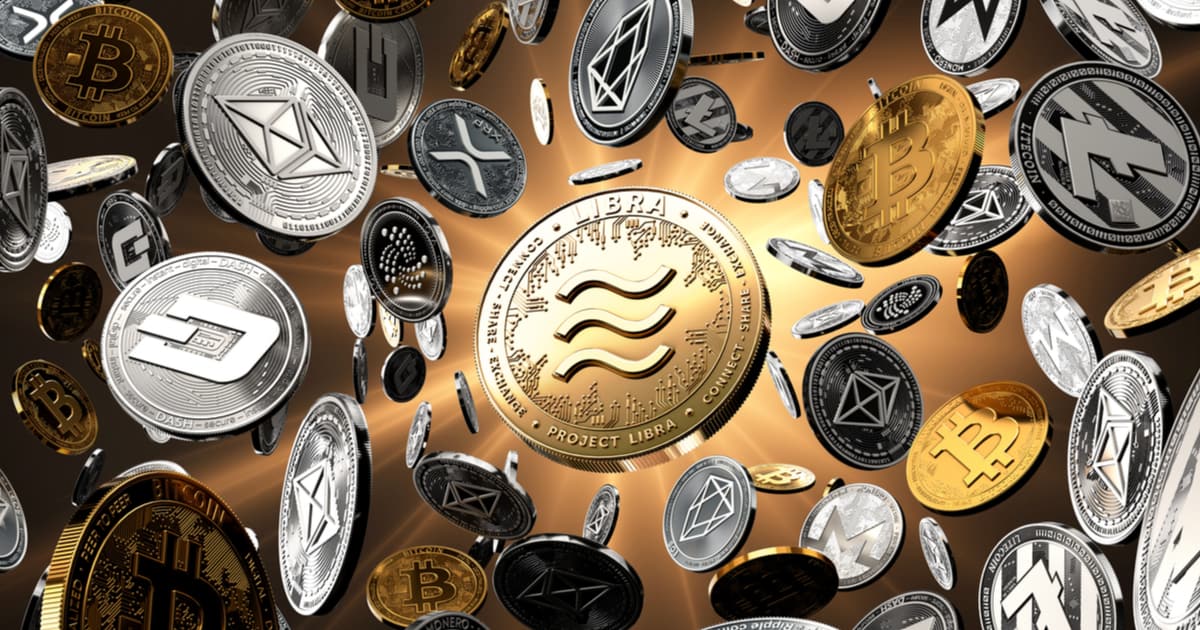Cryptocurrency Growth from a Cybersecurity Standpoint - Are Altcoins as Secure as Bitcoin?
News Publisher Feb 11, 2025 15:45
Crypto growth presents challenges, including security. Identifying smart opportunities like crypto presale offers early access to tokens, while understanding risks is crucial for confident investment in the crypto space.

A digital padlock in the middle of a motherboard - Free Stock Image
Crypto is thriving and continues to expand. While Bitcoin remains the leader, thousands of altcoins (alternative cryptocurrencies) have emerged, each bringing unique ideas and potential uses to the table. But with this kind of fast-paced growth comes real challenges—security being one of the biggest.
To move through this space wisely, it’s not just about understanding the risks but also recognizing smart opportunities. For example, crypto presale opportunities provide investors early access to tokens before they’re listed on major exchanges, often at discounted prices. Many well-known tokens started this way, rewarding those who got in early.
By staying mindful of both the possibilities (and potential risks), investors can approach the crypto space with more confidence and better judgment. This article examines the cybersecurity challenges facing both Bitcoin and altcoins, offering a balanced view of their respective security frameworks.
Bitcoin vs. Altcoins: A Security Comparison
Bitcoin and altcoins each offer unique approaches to security, shaped by their design philosophies, networks, and innovations. Comparing their key features provides a clearer understanding of their respective strengths and challenges:
Bitcoin’s Security Features:
Decentralization ensures that the network is maintained by thousands of nodes globally, making it highly resistant to attacks. Transparency and immutability are key features, as all transactions are public and nearly impossible to alter once confirmed. Additionally, a high hash rate enhances security by significantly increasing the cost and complexity of potential attacks, further safeguarding the system.
Security Advantages of Altcoins:
Advanced technologies like zk-SNARKs in Zcash enhance privacy by allowing secure, private transactions without revealing sensitive information. Improved scalability is a priority for altcoins such as Solana and Polkadot, which focus on delivering fast and cost-effective transactions to handle growing user demands. Additionally, alternative consensus mechanisms like Proof of Stake (PoS) and Delegated Proof of Stake (DPoS) provide energy-efficient security models, offering sustainable and scalable solutions compared to traditional mining methods.
Common Challenges:
-
Vulnerabilities in Code: Rapid development cycles in both Bitcoin and altcoins can introduce bugs that lead to exploits.
-
Risks of Centralization: Smaller networks and less distributed node systems in some altcoins increase susceptibility to attacks.
-
Governance Issues: Transparent and effective governance remains a challenge for decentralized systems, with disputes potentially leading to forks or vulnerabilities.
This comparison underscores that while Bitcoin’s security model is robust, altcoins bring valuable innovations to the table. Each cryptocurrency comes with trade-offs, and security ultimately depends on the project’s implementation and ongoing commitment to safeguarding users.
Altcoins introduce a variety of blockchain technologies and use cases, leading to a broad spectrum of security practices. While some altcoins adopt stringent measures similar to Bitcoin, others prioritize innovation or efficiency, sometimes at the expense of security.
Notable Security Incidents in the Altcoin Space
Altcoins have faced significant security challenges over the years:
-
Ethereum DAO Hack (2016): The exploitation of a vulnerability in the DAO’s smart contract resulted in the loss of $60 million worth of ETH and led to a controversial hard fork.
-
Verge (XVG) Attacks: Repeated 51% attacks due to its lower hash rate caused substantial financial losses.
-
Poly Network Exploit (2021): A hacker exploited a cross-chain protocol vulnerability to steal over $600 million, though almost half of those funds were returned.
These incidents highlight the importance of thorough testing and robust security practices in the altcoin ecosystem.
Comparing Bitcoin and Altcoin Security Models
Consensus Mechanisms
Bitcoin’s Proof of Work (PoW) model is often regarded as a benchmark for blockchain security, though its high energy consumption has driven the development of alternatives. Proof of Stake (PoS), adopted by Ethereum 2.0 and Cardano, significantly reduces energy usage but raises concerns about potential stake centralization. Delegated Proof of Stake (DPoS), used by platforms like EOS, offers faster transaction speeds but compromises some degree of decentralization to achieve this efficiency. Both models have strengths and potential vulnerabilities, and their effectiveness varies depending on implementation.
Network Size and Decentralization
Bitcoin’s large network and high level of decentralization provide strong resistance against attacks, ensuring robust security. In contrast, smaller altcoins often face greater vulnerabilities. For example, lower hash rates make certain altcoins more susceptible to 51% attacks, where a single entity could potentially control the network. Additionally, less distributed node networks increase the risk of centralization, which can undermine the security and reliability of the blockchain.
Development Practices
Bitcoin benefits from a mature and conservative approach to updates, relying on extensive peer review and thorough testing to maintain its security and stability. In contrast, altcoins often focus on rapid innovation, which, while driving new features, can introduce vulnerabilities due to unvetted code and insufficient testing. Additionally, smaller developer teams behind many altcoins may face challenges in implementing comprehensive security measures, further increasing potential risks.
Enhancing Security in the Altcoin Ecosystem
For altcoins to achieve security on par with Bitcoin, they must adopt best practices:
-
Regular Code Audits: Independent audits can identify and address vulnerabilities.
-
Bug Bounty Programs: Encouraging ethical hacking to discover weaknesses.
-
Decentralized Governance: Transparent, decentralized governance reduces risks associated with centralization.
-
Expanding Networks: Increasing the number of nodes and participants strengthens network security.
Protecting Yourself When Investing in Altcoins
As the altcoin market grows, individual investors must take proactive steps to ensure security and minimize risks. Consider the following strategies to protect your investments:
-
Research the Altcoin’s Background: Investigate the development team, project history, and roadmap. Reputable projects are transparent and have detailed documentation.
-
Assess Community Support: A strong and active community indicates widespread trust in the altcoin. Engage in forums or social media groups to gauge sentiment.
-
Diversify Your Portfolio: Avoid putting all your funds into a single altcoin. Diversification reduces overall risk and exposure to individual project failures.
-
Secure Your Wallets: Use hardware wallets for long-term storage. Avoid keeping large sums on exchanges to mitigate risks from potential hacks.
-
Stay Informed About Security Updates: Follow updates from the development team and apply software patches promptly to address vulnerabilities.
-
Understand Market Volatility: Cryptocurrencies are inherently volatile. Be prepared for significant price fluctuations and invest only what you can afford to lose.
By incorporating these practices, investors can better navigate the complexities of the altcoin market and safeguard their assets effectively.
Additional Considerations for Securing the Cryptocurrency Ecosystem
As cryptocurrencies continue to evolve, both Bitcoin and altcoins face common challenges that require collaborative efforts to overcome. Here are key areas to focus on for improving security across the ecosystem:
-
Education for Users: Many security breaches occur due to user errors, such as falling for phishing scams or using weak passwords. Educational initiatives can help users recognize threats and adopt safer practices.
-
Strengthening Regulations: Clear and consistent regulations can reduce fraudulent activity and improve trust in cryptocurrencies. Regulators and blockchain developers must work together to balance innovation with consumer protection.
-
Encouraging Open-Source Contributions: Open-source development allows a larger community of developers to review and improve the code. This approach reduces the likelihood of undiscovered vulnerabilities.
-
Developing Secure Bridges for Cross-Chain Interactions: With the rise of cross-chain technologies, ensuring the security of interoperability protocols is essential to prevent exploits like the Poly Network hack.
-
Promoting Decentralization: Decentralization remains a cornerstone of blockchain security. Encouraging widespread participation in network maintenance can reduce risks associated with centralization.
By addressing these considerations, the cryptocurrency community can build a more secure and resilient environment for all participants.
The Future of Cryptocurrency Security
As the cryptocurrency landscape continues to evolve, so do the associated cybersecurity threats. Emerging technologies like quantum computing could challenge existing cryptographic protocols, necessitating proactive preparation. This includes the development of post-quantum cryptography to create algorithms resistant to quantum attacks, ensuring long-term security. Enhanced interoperability is also critical, enabling secure cross-chain communication to minimize vulnerabilities and prevent exploits. Furthermore, global collaboration is essential, fostering the sharing of knowledge and best practices across projects and jurisdictions to strengthen the overall resilience of the cryptocurrency ecosystem.
Conclusion
While altcoins introduce innovations, their security practices vary widely, with some offering robust solutions and others facing significant vulnerabilities. Both Bitcoin and altcoins play essential roles in the digital asset ecosystem, and their security is a shared responsibility among developers, users, and platforms. By prioritizing security and adopting best practices, the cryptocurrency community can foster a safer and more resilient future.
.jpg)
